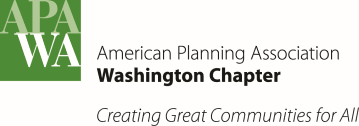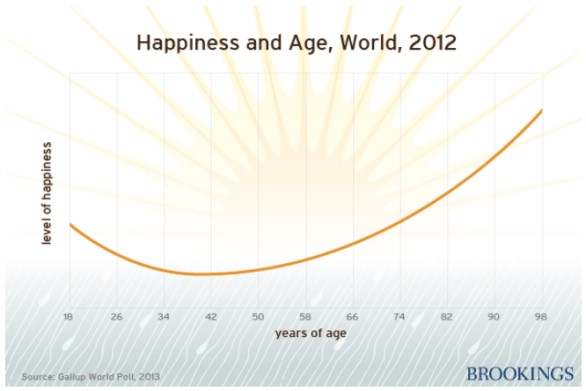February President's Message
 |
Boring Sections!
Thanks to the Puget Sound Section and Young Planners Group for organizing great get-togethers and cool tours. This month I went on The Viaduct Tunnel Boring Tour. It was really interesting to be onsite and feel the scale of this project. Fortunately, unlike past PSS events, I emerged from the post-tour happy hour without a headache, I met new planners and got to visit with some veteran planners.
The chapter has worked hard to support Sections by increasing their budgets, assisting with bylaw updates that are necessary to synchronize with national election cycles, involving Sections when filling committee chair vacancies, and convening Section presidents on a quarterly basis to facilitate information sharing and best practices. If you're looking for a local network of planners to connect with, contact your Section president and get involved at the local level. No doubt there's something boring you can do in your area.
National Conference!
Registration is now open for the 2015 APA National Conference in Seattle, so mark your work calendars as busy on April 18-21. Get your paperwork turned in soon as early registration ends on February 19.
As you probably know, there are hundreds of sessions, over 50 mobile workshops, local events, and receptions – most are posted on the national website and plan to be faced with tough decisions regarding what to attend. Below is an infographic from national APA that summarizes the topics you'll find:
 |
In addition to looking for information on the national website, this month's edition of Planning magazine focuses on the conference and our region. They did a great job covering the Seattle portion of our fair state but missed many of the rest of our cities, towns, unincorporated and rural areas. Look for future articles about great planning being done in other parts of the state. If you have projects you want to highlight, contact national APA.
Planning Short Course!
Last month we announced that the chapter entered into a Memorandum of Agreement with Department of Commerce, the Planning Association of Washington, and the Washington Cities Insurance Authority to support the live Planning Short Course. Another development in this area is the unveiling of the long-awaited Digital Short Course Series.
These same partners, with leadership from AWC, started this work last year and now five of the courses are live. Thanks go to many including: FAICP Lisa Verner, FAICP Joe Tovar, Chapter Vice President Laura Hudson, PAW President Chris Branch and Education Chair Andy Lane, Commerce project manager Anne Fritzel, and managing director Jeff Wilson.
My personal two cents is that these are great resources – very clear, easy to watch and useful for decision-makers who want their planning education in short segments, such as planning commissioners or elected officials!
I encourage you to watch them. Then, use or distribute them. These are tools to help you, the planner, get the best information into the hands, hearts, and minds of planning decision-makers across the state. We make great communities happen by educating and supporting our decision-makers.
Prez Soapbox - Infographics!
A few months ago I waxed eloquent regarding the importance of communicating, in plain language, regarding the goals and outcomes of your planning process. I linked my soliloquy to national APA's excellent members-only Communications Bootcamp website. This month, I'm adding a small coda. It's the idea that a picture is worth a thousand words and sometimes the picture is an infographic.
I love infographics and unfortunately it's not often that I see really great ones come out from the planning community. In fact, sadly, this article doesn't include a single planning infographic. But, it does include a link to one think tank's Best Infographics of the Year.
I loved these public policy infographics. More importantly, I shared it with a lot of friends and family and engaged in interesting conversations.
- I shared the graphic regarding the Top 80 College Majors and Associated Average Lifetime Earnings with my kids. Despite the data, I have an aspiring singer and soon-to-be pro Ultimate Frisbee player rather than engineers (note to self -- I might not get to retire as early as I hoped).
- I shared the Inequality and Social Mobility Economic Quintiles graphic and bemoaned the challenges to moving from a lower income quintile to a higher one. Despite the Horatio Alger mythos, the data shows the vast obstacles to moving upward. This series of graphics led me to another powerful study that linked poverty to obesity. The study showed a correlation between family poverty and childhood obesity. The next link was between adult obesity and lower adult average incomes. My understanding of these correlations is that if you start out poor as a kid, your chances of being obese are higher and because of obesity your chances of being poorer are higher. This is one narrow example of how one gets trapped in a cycle of poverty.
- Last, I shared the Happiness & Age Curve with a number of people and tried to tell them life would keep getting better for them, unless they were young and then it would get worse...until they became old like me. This is especially true if they are in their 30s and decide to have kids (note: kids are awesome). Surprisingly, this dialogue did not go over too well. But, the data also showed that if they were gainfully employed, they would be happier. I shared this with my kids and told them to enjoy themselves now because they were in for a rough ride for about two decades.
Infographics are a powerful tool for sharing a lot of data in a simple way and to engage people in discussions they might not have otherwise. Infographics allow planners to dig deeper into the complex issues we face. If you have some favorite infographics, especially if they deal with planning, send them my way and we'll post in a future newsletter. For now, as of the date of writing this article, my favorite infographic of January 2015 is shown below.
Ivan Miller, AICP
President, APA Washington
[email protected]
Return to February issue of The Washington Planner
|






